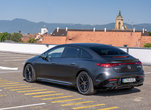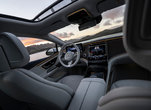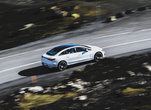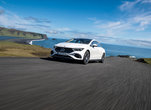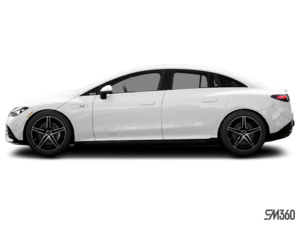A Comparative Analysis of the 2024 Mercedes-Benz EQE and 2024 BMW i4 Electric Vehicles
January 22 2024,
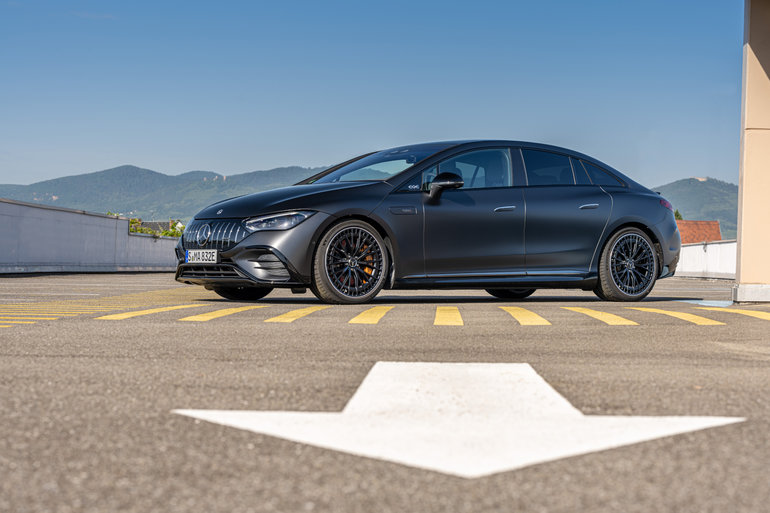
The electric vehicle (EV) market is poised for significant growth in 2024, with luxury automakers such as Mercedes-Benz and BMW competing fiercely for a share of this burgeoning segment. Among the contenders are the 2024 Mercedes-Benz EQE and the 2024 BMW i4, both representing the pinnacle of electric vehicle technology. In this analysis, we will compare these two electric vehicles, highlighting the distinctive features that set the Mercedes-Benz EQE apart from its BMW counterpart.
The 2024 Mercedes-Benz EQE stands out in several notable ways, offering a distinctive proposition in the luxury electric vehicle (EV) market:
1. Timeless Elegance: Mercedes-Benz has a long-standing reputation for producing vehicles with timeless and elegant designs, and the EQE continues this tradition. Its sleek, aerodynamic silhouette and refined aesthetics set it apart, appealing to those who appreciate understated luxury.
2. Opulent Interior: The EQE's interior is a testament to luxury craftsmanship. It incorporates high-quality materials, including sustainable wood and premium leather alternatives, providing an ambiance of opulence and comfort. The cabin's spaciousness and attention to detail make it stand out in its class.
3. Cutting-Edge Technology: Mercedes-Benz has integrated cutting-edge technology seamlessly into the EQE. The infotainment system is comprehensive, intuitive, and user-friendly. Additionally, advanced driver-assistance features elevate the driving experience and enhance safety, making it a standout choice for tech-savvy buyers.
4. Refined Driving Experience: The EQE's electric powertrain delivers a smooth and refined driving experience. It excels in providing ample acceleration and precise handling, making it an excellent choice for those who prioritize a comfortable and composed ride.
5. Charging Infrastructure: Mercedes-Benz has invested significantly in expanding its charging infrastructure, providing EQE owners access to the Mercedes me Charge service. This extensive network of charging stations enhances the vehicle's practicality and makes long-distance travel more convenient, setting it apart in terms of charging accessibility.
The charging capabilities of the Mercedes-Benz EQE showcase its efficiency and convenience. With a maximum AC charging speed of 9.6 kW, the EQE offers a relatively fast AC charging time, taking just 9.5 hours to charge from 10% to 100%. The AC charging connector type, J1772, ensures compatibility with a wide range of charging stations. For even quicker charging on the go, the EQE boasts an impressive DC charging speed of 170 kW, allowing a rapid 10% to 80% charge in just 32 minutes. The DC charging connector type, Combined Charging System (CCS), enhances the vehicle's flexibility, making it well-prepared for both daily commuting and long-distance journeys, reinforcing its appeal as a practical and efficient electric vehicle.
6. Connectivity Features: The EQE boasts advanced connectivity features, ensuring drivers stay connected and informed while on the move. This seamless integration of technology further enhances the overall driving experience and sets it apart in terms of convenience.
Interior Space Comparison: Mercedes-Benz EQE vs BMW i4
Interior space is a crucial factor for many potential buyers when considering a luxury electric vehicle (EV), and the 2024 Mercedes-Benz EQE offers notable advantages over the BMW i4 in several key areas.
1. Front Head Room: The Mercedes-Benz EQE provides an impressive 1,003 mm of front headroom, surpassing the BMW i4's 970 mm. This additional headroom contributes to a more spacious and open feel in the front cabin of the EQE, offering greater comfort for taller drivers and passengers.
2. Front Shoulder Room: The EQE excels in front shoulder room as well, offering 1,496 mm compared to the BMW i4's 1,402 mm. This wider front shoulder space not only enhances comfort but also provides a sense of openness, allowing occupants to enjoy a more relaxed and less confined driving experience.
3. Rear Head Room: Moving to the rear of the vehicle, the Mercedes-Benz EQE continues to excel in interior space. It offers 1,001 mm of rear headroom, significantly more generous than the BMW i4's 930 mm. This additional headroom ensures that rear-seat passengers in the EQE can sit comfortably without feeling cramped, making it a more welcoming option for passengers of various heights.
4. Rear Leg Room: Finally, in terms of rear legroom, the EQE once again stands out with 1,031 mm compared to the BMW i4's 869 mm. This extra legroom in the EQE's rear cabin provides rear-seat passengers with ample space to stretch their legs and enjoy a more relaxed journey.
Performance Comparison: 2024 Mercedes-Benz EQE vs 2024 BMW i4
Starting with the base models, the Mercedes-Benz EQE 350 boasts 288 horsepower and a maximum torque of 564 pound-feet. In contrast, the BMW i4 edrive35 offers 282 horsepower and 295 pound-feet of torque. This gives the EQE 350 a slight edge in torque, contributing to quicker acceleration and a more dynamic driving experience.
Interestingly, even the EQE 350 surpasses the BMW i4 edrive40 and edrive40 with xDrive models in terms of torque. The BMW i4 edrive40 offers 317 pound-feet of torque, while the edrive40 with xDrive provides 443 pound-feet. The EQE 350's 564 pound-feet of torque outshines both these i4 variants, highlighting its superior power delivery and responsiveness.
Taking the performance comparison further, the top-tier Mercedes-Benz EQE 500 leads the way with an impressive 402 horsepower and a remarkable 633 pound-feet of torque. Notably, this torque figure surpasses that of any model in the BMW i4 lineup, including the high-performance 2024 BMW i4 M50, which delivers 586 pound-feet of torque.
In summary, the 2024 Mercedes-Benz EQE lineup, particularly the EQE 350 and EQE 500 models, offers impressive power and torque figures that not only outshine their BMW i4 counterparts but also deliver a compelling driving experience. The substantial torque of the EQE models contributes to quick acceleration, smooth performance, and a sense of effortless power, reinforcing the EQE's position as a strong contender in the luxury electric vehicle segment when it comes to performance. Combine this with a more versatile and welcoming interior along with a range of distinct luxury features, and the 2024 Mercedes-Benz EQE is everything you would expect from a luxury Mercedes-Benz vehicle with all of the advantages of electrification.


